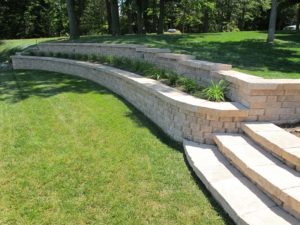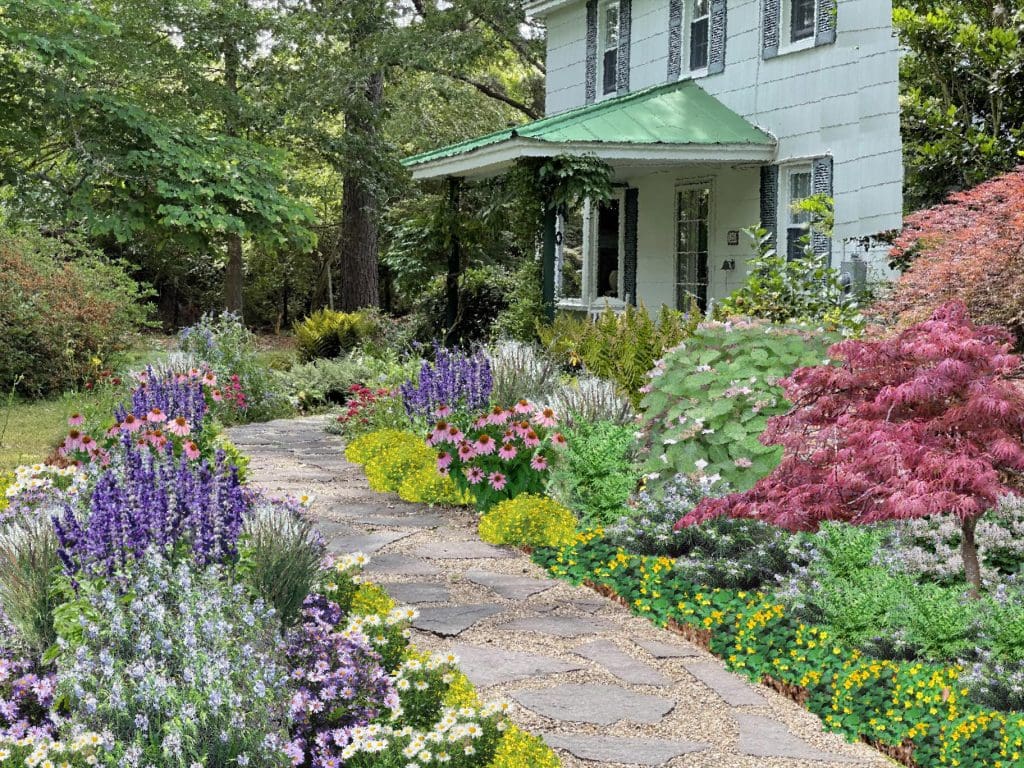Examine This Report on Hilton Head Landscapes
Examine This Report on Hilton Head Landscapes
Blog Article
More About Hilton Head Landscapes
Table of ContentsThe Of Hilton Head LandscapesAn Unbiased View of Hilton Head LandscapesA Biased View of Hilton Head LandscapesRumored Buzz on Hilton Head LandscapesNot known Details About Hilton Head Landscapes The Best Guide To Hilton Head LandscapesLittle Known Facts About Hilton Head Landscapes.The Best Guide To Hilton Head Landscapes
Type compatibility is also a major component of unity in designone or two noticeably different kinds benefit contrast and focus, yet generally all various other types ought to have some similarities for a combined look. Appearance refers to just how crude or fine the surface of the plant or hardscape material really feels and/or looks.
Examples of plants with coarse appearance include philodendrons, agaves, bromeliads, hollies, hands, and hydrangeas. Attributes that produce fine texture consist of small foliage; thin, strappy leaves (yards) or tall, slim stems; small, thick twigs and tiny branches; long stems (creeping plants); and small, fragile flowers.
About Hilton Head Landscapes
A lot of plants are moderate texture, in that they can not be described as having either rugged or great appearance. Medium-textured plants act as a background to web link and combine the rugged- and fine-textured plants.

To make an area really feel smaller, place the rugged appearances along the outer boundary and the fine structures closest to the customer. The information of the rugged appearance makes the plants show up closer and makes the room feel smaller. The perceived texture of plants can additionally change with the distance from the plant.
The smart Trick of Hilton Head Landscapes That Nobody is Talking About
Vibrant shades raise the comparison and make the structure show up coarser, while soft colors can squash structure. Hardscape with a crude texturesuch as really rough rocks and bold, large timberstends to make all plant product appear much more moderate distinctive. Designers frequently establish a structure study (Number 8) on paper to assist choose the setup of plant materials.
Number 8. Structure research study. Color in plant product and hardscape includes passion and variety to the landscape. Shade is one of the most obvious aspect in the landscape and is typically the emphasis of most homeowners; however, it is likewise one of the most short-lived element, generally lasting just a few weeks a year for individual plants.
Excitement About Hilton Head Landscapes
An easy description of the color wheel includes the three primaries of red, blue, and yellow; the three second colors (a mix of two primaries) of environment-friendly, orange, and violet; and 6 tertiary shades (a mix of one adjacent main and secondary color), such as red-orange. Shade concept clarifies the partnership of shades per various other and how they should be utilized in a composition.

Analogous (sometimes called harmonious) color design are any type of three to five colors that are adjacent on the color wheel, such as red, red-orange, orange, yellow-orange, and yellow, or blue, blue-violet, and violet (Landscapers near me). The shades are related to every various other due to the fact that they normally consist of 2 primaries mixed to develop a second and 2 tertiary colors, which implies they share typical properties
They tend to have high contrast between them. The most common collections are violet and yellow, red and green, and blue and orange. Complementary shades are often found normally in blossoms; a typical set is yellow and violet. Color is found in the blossoms, foliage, bark, and fruit of plants.
The 6-Second Trick For Hilton Head Landscapes
Environment-friendly vegetation in all its various tones is the dominant color by amount, yet other shades catch focus quicker as a result of their high comparison to the color eco-friendly. Shade is also discovered in buildings, rocks, pavers, timber, and furnishings. A lot of colors in natural materials, such as stone and timber, are usually soft and often tend to be variants of brownish, tan, and light yellow.
Shade is an essential component for producing rate of interest and range in the landscape. Colors have properties that can influence feelings, spatial perception, light high quality, balance, and focus. One building of shade is defined relative to temperaturecolors appear to be amazing or warm and can impact emotions or sensations. Cool colors often tend to be relaxing and should be used in areas for relaxation and serenity.
The Buzz on Hilton Head Landscapes
The "temperature" of colors can also impact the perception of distance. Amazing colors tend to decline and are viewed as being farther away, making an area feel bigger. Warm shades tend to advancement and are regarded as being more detailed, making a space really feel smaller sized. Shade can additionally be made use of to catch interest and straight sights.
Intense yellow, which has the greatest intensity, also has a high contrast with all various other colors (frequently defined as a "pop" of shade) and should be made use of moderately. A percentage of extreme color has as much visual weight as a big amount of an extra controlled or weaker color.
Analogous (occasionally called site harmonious) color design are any three to 5 shades that are adjacent on the color wheel, such as red, red-orange, orange, yellow-orange, and yellow, or blue, blue-violet, and violet. The shades relate per other since they normally consist of 2 primaries blended to create a secondary and 2 tertiary shades, which means they share usual residential properties.
Some Known Details About Hilton Head Landscapes
They tend to have high contrast between them. The most common sets are violet and yellow, red and green, and blue and orange. Complementary colors are commonly found naturally in blossoms; a typical pair is yellow and violet. Shade is found in the flowers, vegetation, bark, and fruit of plants.
Eco-friendly foliage in all its numerous shades is the leading shade by quantity, but other shades capture attention more easily due to their high contrast to the color green - landscapers hilton head island - https://pxhere.com/en/photographer/4299392. Color is also found in structures, rocks, pavers, timber, and furniture. The majority of colors in all-natural materials, such as rock and wood, are normally soft and tend to be variants of brown, tan, and light yellow
The Facts About Hilton Head Landscapes Revealed
Colors have residential or commercial properties that can impact emotions, spatial understanding, light quality, balance, and emphasis. Great colors have a tendency to be soothing and ought to be used in areas for relaxation and calmness.
Amazing colors have a tendency to decline and are viewed as being farther away, making a room feel bigger. Color can additionally be utilized to capture attention and direct sights - https://hiltonheadlandscapes.godaddysites.com/f/transform-your-outdoor-space-with-hilton-head-landscapes.
Bright yellow, which has the highest possible strength, additionally has a high contrast with all various other colors (frequently explained as a "pop" of shade) and should be made use of moderately. A tiny amount of extreme shade has as much visual weight as a big amount of an extra suppressed or weaker shade.
Report this page